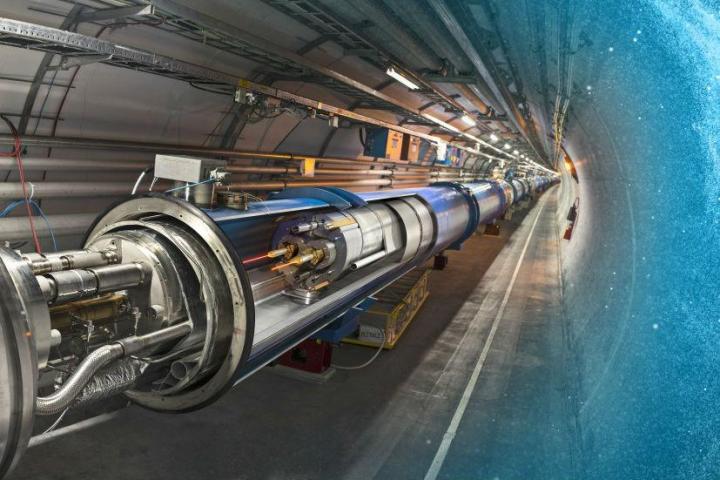
First theorized in the 1960s, pentaquarks are basically a specific type of subatomic particle that are comprised of five quarks — the smallest subatomic particles that scientists have ever been able to observe. In different combinations, quarks come together to form larger particles — much like different combinations of protons, neutrons, and electrons produce different elements on the periodic table.
Just last year, particle physicists at CERN announced the discovery of the first four-quark particle (tetraquark) named Z(4430) — but the discovery of this new pentaquark particle takes things a step further, and could open up completely new realms of physics.

“The pentaquark is not just any new particle,” said LHCb spokesperson Guy Wilkinson. “It represents a way to aggregate quarks, namely the fundamental constituents of ordinary protons and neutrons, in a pattern that has never been observed before in over 50 years of experimental searches. Studying its properties may allow us to understand better how ordinary matter, the protons and neutrons from which we’re all made, is constituted.”
Researchers have been looking for this particle for the better half of the last century, but this is the first time that scientists have found conclusive evidence of its existence. This is largely thanks to the huge dataset and phenomenal sensing capabilities of the LHC. “It’s as if the previous searches were looking for silhouettes in the dark, whereas LHCb conducted the search with the lights on, and from all angles,” CERN representatives said in a press release.
This discovery is just the beginning, though. Next, the researchers aim to study the properties of the pentaquark more precisely, hopefully shedding some light on how the quarks inside it are bound together, and whether they’re bonded together equally or not. The new particle was confirmed with data from Run 1 of the LHC, and they’re still interpreting data gathered from Run 2, so CERN expects to find out even more in the coming months.
Editors' Recommendations
- World’s largest particle collider is now even more powerful
- CERN wants to build an even larger super-collider to research particle physics




